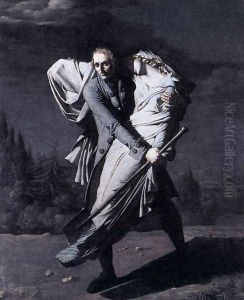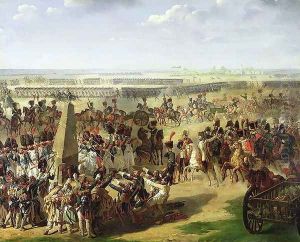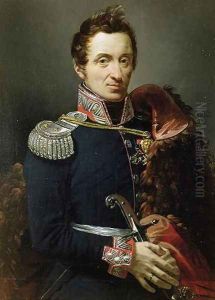Pierre-Auguste Vafflard Paintings
Pierre-Auguste Vafflard was a French painter born on September 23, 1777, in Paris. He is known for his historical and genre scenes, as well as portraits. Vafflard's artistic journey began under the tutelage of renowned painters such as Jacques-Louis David, who was a leading figure in the Neoclassical movement. Under David's influence, Vafflard developed a keen interest in historical accuracy and the classical ideals of beauty and harmony.
During the tumultuous years of the French Revolution and the Napoleonic era, Vafflard's subjects often reflected contemporary events and the heroic ideals of the time. His paintings showed a strong narrative element, capturing moments of heroism and the patriotic fervor that characterized the period. Despite the political upheavals, Vafflard managed to secure commissions and continue his work, including producing illustrations for books.
After the fall of Napoleon, Vafflard's career faced challenges due to the shift in political and artistic tastes. The Restoration period brought about a different set of preferences, and artists who had thrived under Napoleon's patronage found themselves navigating a changed landscape. Nevertheless, Vafflard continued to exhibit at the Paris Salon, where artists showcased their works to the public and potential patrons.
Throughout his career, Vafflard's dedication to his craft earned him a degree of recognition. He received a medal at the Salon of 1812, and his works were collected by various patrons. Despite this, he never achieved the same level of fame as some of his contemporaries.
Pierre-Auguste Vafflard passed away on August 19, 1837, in Paris. Although not as widely known today as some of his peers, his paintings are appreciated for their historical value and their representation of the artistic trends during a pivotal moment in French history. Vafflard's works can be found in various museums and collections, where they continue to be studied and admired by those interested in the art and history of the late 18th and early 19th centuries.


